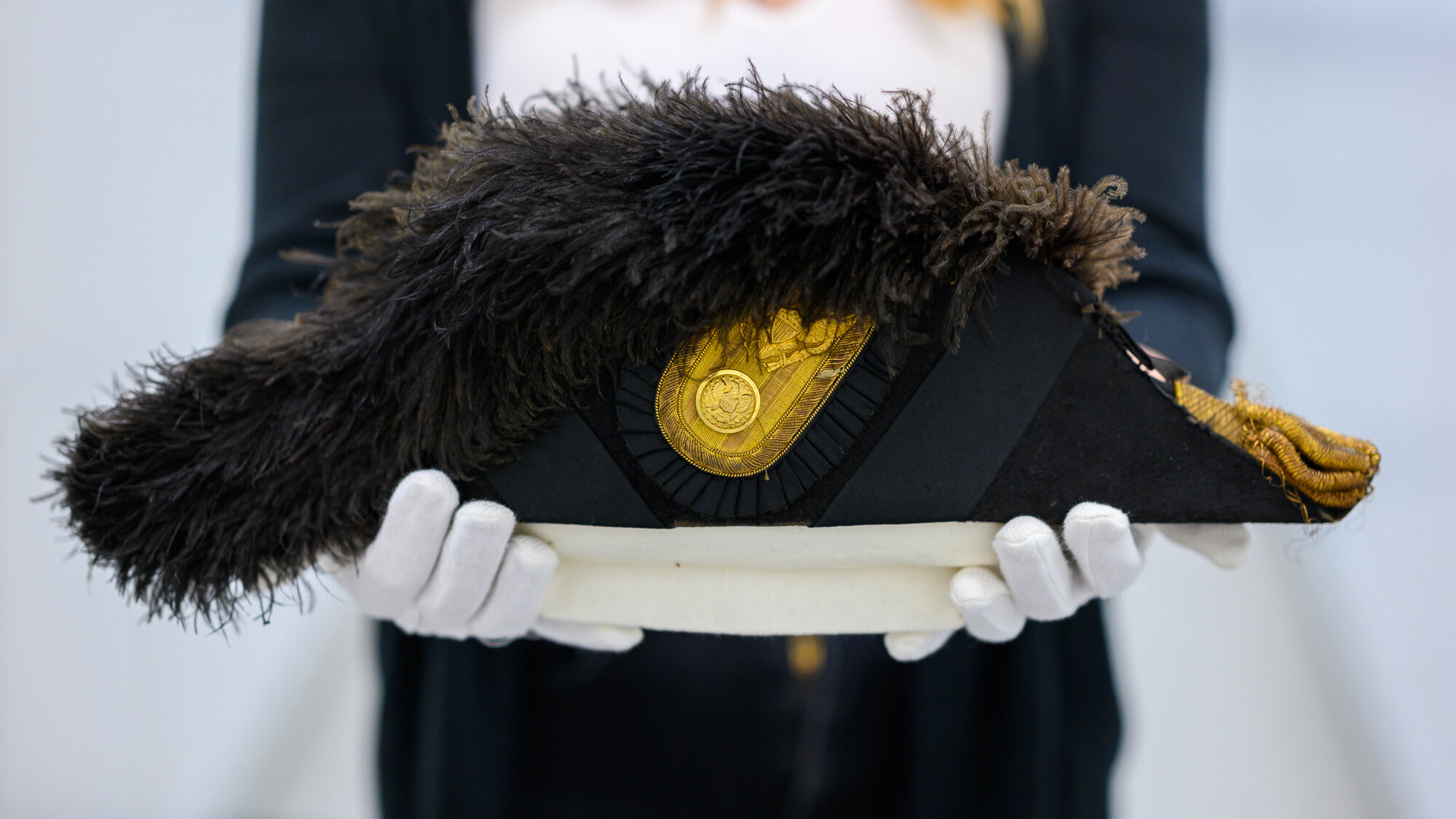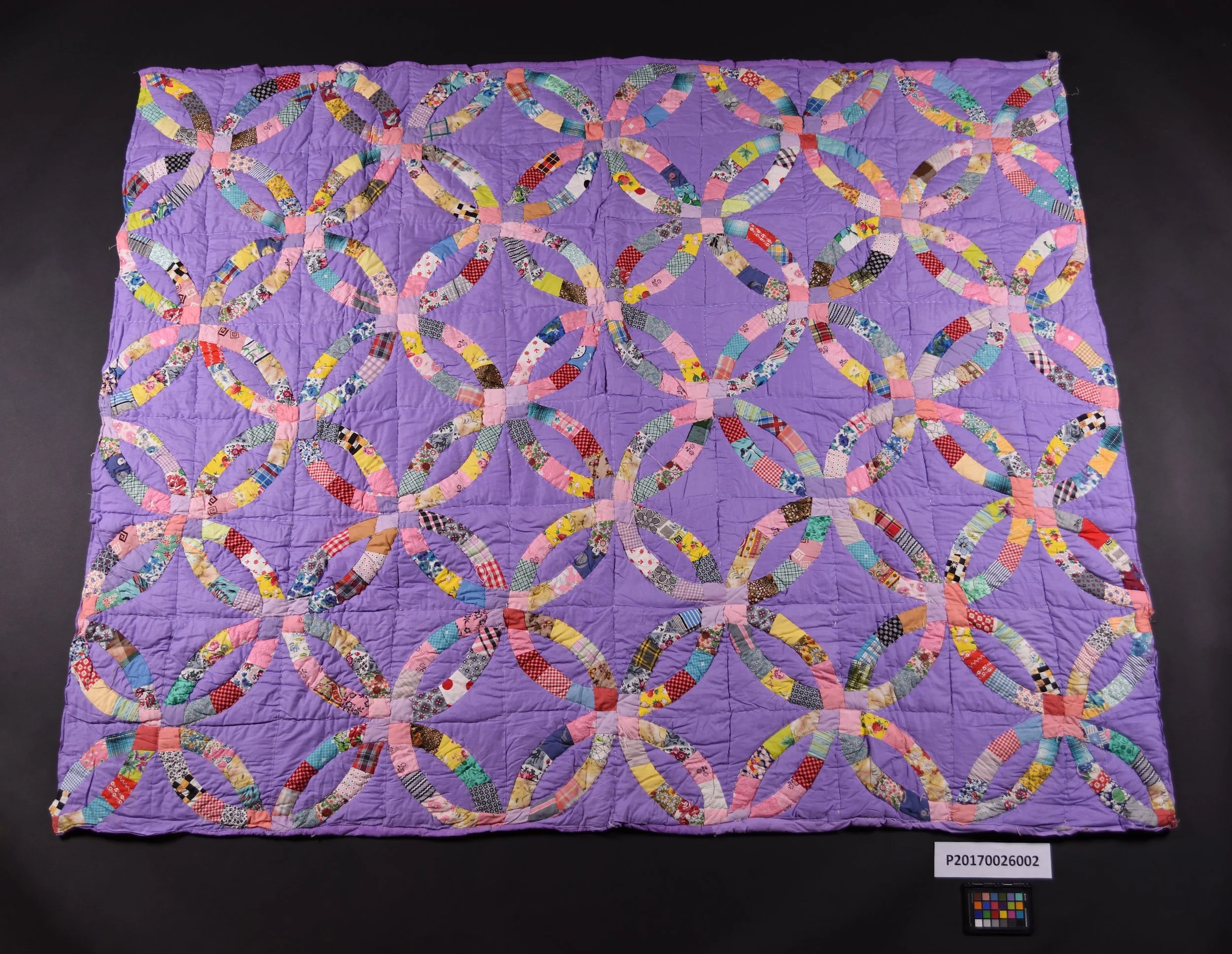Deaccessioning
Gloved hands hold am 1800s United States military hat that was deaccessioned from the Galt’s collections in 2021. The hat was formerly accessioned with the number P19683054000.
Photo by Galt Museum & Archives.
Since its earliest years, the Galt Museum & Archives has collected and preserved artifacts. As its collections have grown and evolved, the Galt's mandate for collecting objects has become focused on "preserving the human history of Lethbridge and southwestern Alberta." However, many artifacts donated before the current collecting mandate do not demonstrate those regions and connections.
In 2010, the Galt's staff began actively reviewing the collections and assessing objects that do not fit the collecting mandate of southwestern Alberta. Staff identified numerous objects in the collection that could be "qualified for deaccession." Some because they lacked sufficient historical context, and others because they better represent the history of other regions and communities.
For example, an 1800s United States military hat was donated to the Galt's collection in 1968 (P19683054000). The donor told the museum staff that it had belonged to General J. E. Marion of the National Guard of Montana, certainly an object with a clear connection to a historical figure and moment. However, after researching General Marion extensively, the Galt's staff were unable to find any obvious connections to southwestern Alberta. While the hat can be a useful object to connect viewers and researchers to history, it is not the history of the area covered in the mandate of the Galt. Staff classified the hat as "qualified for deaccession."
Deaccessioning is the standard practice for museums to carefully consider which objects to remove from their collections and why. When museums have artifacts within their collections that do not fit their collecting mandate or share the stories of the region they serve, those objects may be "considered for deaccession." The deaccessioning process often helps museums refine and focus resources on the collections that are directly relevant to the histories of the communities they serve.
A Collections Committee reviews all the objects that staff propose for deaccession. The committee includes representatives from the community, and their recommendations are reviewed and evaluated by the Galt's Board of Directors. The Galt follows industry best practices set by the Canadian Museums Association for deaccessioning. This means that the formally deaccessioned objects are first offered to other public museums in regions relevant to the history of the object. In the case of General Marion's hat, staff began to search for other historical institutions who could use it to tell the history associated with their mandate.
By conducting collections reviews and subsequent deaccessioning projects, the Galt's staff continue to fulfill the mandate to "inspire our communities to engage in the human history of southwestern Alberta, together, preserving and sharing collections and stories."
Find out more about how the Galt follows industry best practices in the Deaccessioning FAQ on our website at www.galtmuseum.com/deaccessioning-faqs.











Dr. Frank Hamilton Mewburn was a wiry and fiery surgeon, politician, army officer, and university professor who greatly contributed to the development of Lethbridge. Mewburn came from a long ling of medical professionals, graduating from McGill University in Montreal in 1881.